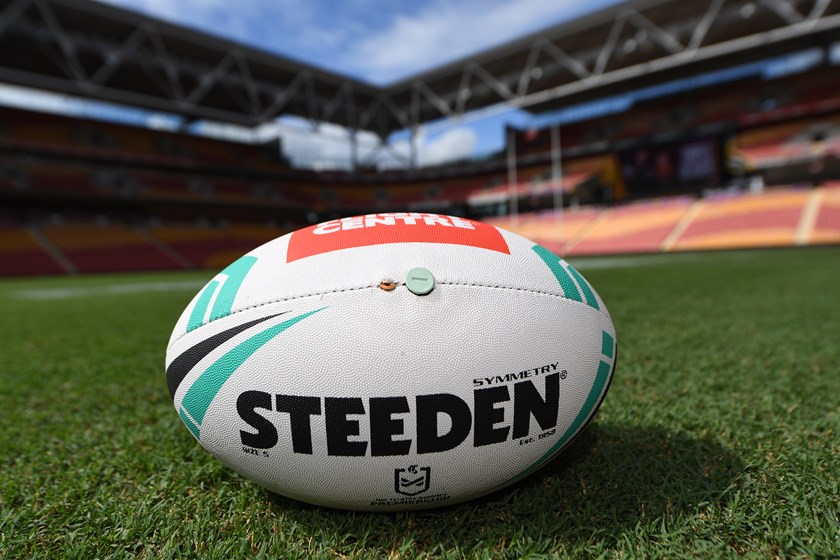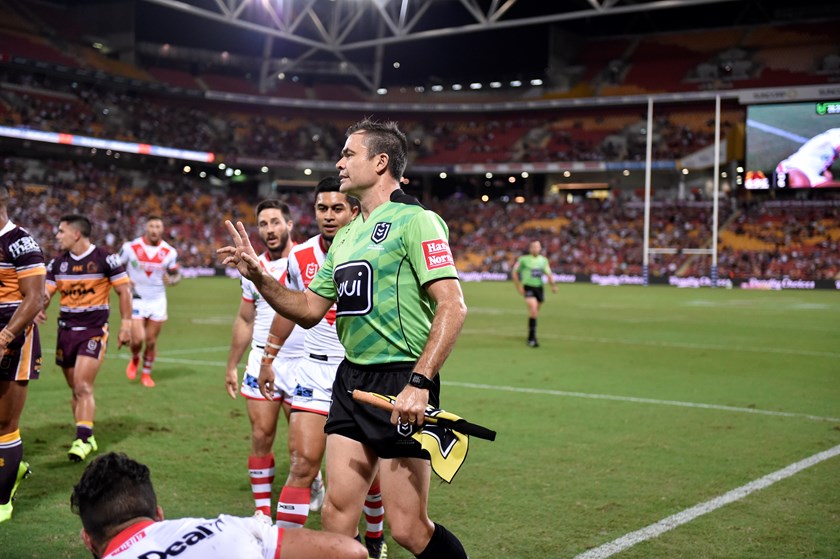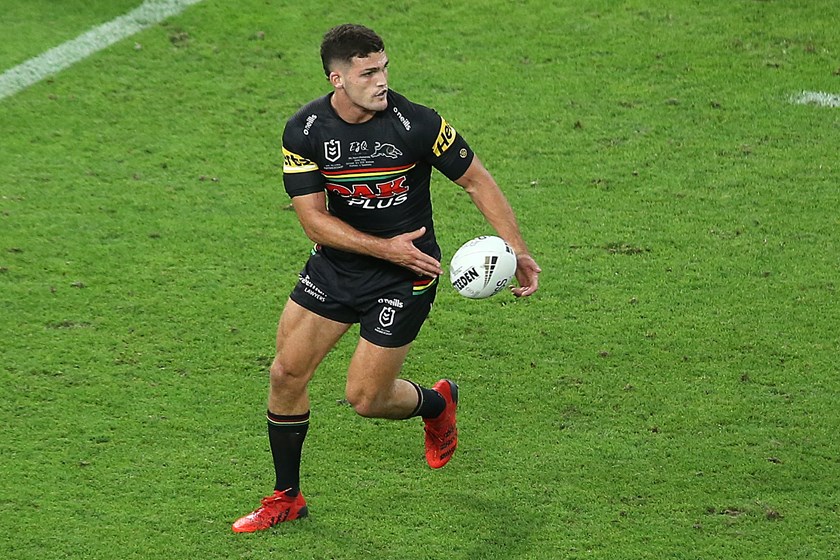PART1 :
NRL Unpacked: Deep-dive into NRL's advanced forward pass technology
Author
Chris KennedyNRL.com ReporterTimestampThu 31 Mar 2022, 12:00 PM
The NRL is entering the late stages of trials with ball-tracking technology that has the potential to eliminate forward pass errors — among many other possibilities for the game.
The current NRLW competition has been using technology-embedded balls created by UK-based company
Sportable, the brainchild of three South African rugby fanatics who have spent the past six years refining the technology.
NRL.com spoke to Sportable's chief technology officer Pete Husemeyer from London as well as NRL Executive General Manager – Elite Football Graham Annesley about the trials, the implications of the technology and how close the NRL is to implementing the software.
How does it work?
The Steeden footballs are implanted with a piece of technology that weighs just a few grams. They contain an accelerometer, a gyroscope and a magnetometer that are charged via a cable and recycled once the ball reaches the end of its usability.
"We literally have a device for tracking them in 3D like radar," Husemeyer says.
We track it like we track a missile.
Pete Husemeyer, Sportable
"We know its exact position at every moment in time. Then we add to that the accelerometer and the gyroscope and the magnetometer."
The gyroscope measures the spin of the ball, which Husemeyer says is an important part of the equation, while the accelerometer is the same type of software in smartphones that measures speed and changes of direction.
"Using that real time data, we're able to infer the angle of the passer's hands as the ball leaves the hands," Husemeyer adds.
"If the player is running and their hands are angled sideways, the ball can still float forward with momentum but it's actually a flat pass.
The key thing isn't whether the ball went forward or not; the key thing is to know the angle of the passer's hands.
Pete Husemeyer, Sportable
In the average game, a majority of passes technically travel forward in the sense they are caught in front of the point they were delivered from.
Husemeyer says the technology can separate which ones were passed backwards from the hands and travelled forward with natural momentum compared to which ones were propelled forward out of the hands.
Why do we need it now?
Annesley recognises the forward pass issue has become a bigger controversy in recent times. With every game broadcast live, cameras are usually mounted close to halfway — creating a parallax error for passes closer to the ends of the field.
The key is that these passes are try-scoring chances.
Simply, the lines on the field make passes that leave the hands just before a line and are caught just after it look worse, even though often they are still passed backwards. There can also be times when a passer has been hit as he or she passes the ball, adding to the optical illusion because often the pass is caught well ahead of where it left the hands, and the passer has been prevented from travelling downfield with the ball.
"Forward passes have been a problem forever and a day," Annesley says.
"The path of the ball across the ground is irrelevant. It's about whether the player who releases the ball has released it in a backwards or flat direction."
Manly's final play raid called back for forward pass
Where is it up to now?
The technology has been in use in the NRLW for three rounds, with Sportable using those games to continue to build data.
By deliberate design, the NRL has not been seeing live results.
"A lot of what we do is based on the power of large numbers," Husemeyer says. "When we gather thousands of instances of punts or passes, your predictive power becomes better — especially with the forward pass.
"We're really looking forward to the results from that.
"We're doing a comparison analysis where the refs will call all their forwards, we'll call all our forwards, and we'll compare notes afterwards. What we'll learn is how well the referees stand up against the forward pass data."
Addo-Carr denied by a forward pass
Neither Husemeyer nor Annesley expected the trial to come back with the technology picking up a huge number of missed forward passes, but if that were to be the case the technology can be adjusted.
For example, an extra margin of acceptability of one, two, five degrees can be added in.
"That's the final component, we have to decide how and when to use it," Annesley says.
"Our game is based on continuity. We don't want to be pulling up things that don't look like forward passes and causing unnecessary stoppages.
"We need to develop policies for its use that won’t unduly interfere with the flow of the game and the entertainment value for fans.
"For example: should we only use it in try scoring movements, or throughout the entire game? My gut feel is we would probably apply a similar process for forward passes as we currently do for other bunker decisions.
"Do we really want to be stopping a game for a pass that's going one or two degrees forward or are we looking more for the ones that are 10 or 15 degrees forward —ultimately these are policy decisions for the Commission to determine."
How will the ball itself behave?
Husemeyer is convinced the players wouldn't even know they were using a Sportable ball unless they were told — information which has been supported throughout the NRLW competition so far this year.
Sportable has spent years refining the technology to make sure it is centred within the ball and does not affect the way the ball behaves.
"It's only a few grams and it's taken us six years to get right," Husemeyer says.
It's literally like putting a tiny computer inside the ball.
Pete Husemeyer, Sportable
"It was quite nerve wracking trying to get the ball through 80 minutes of play, but we're confident. Part of that process has been about making the electronics resilient and tough but the other part is athletes are the most unbelievably, finely-tuned detectives of difference."
Remarkably, even the sound the ball makes when kicked is accounted for.
"In sports science they call it the acoustic feedback mechanism. The primary mechanism for athletes to gauge how well they did at something, and it's true in golf, a lot of sports as well as rugby, is the acoustic response. As soon as you strike the ball, how does it sound to the ear?
"You can tell if something wasn't right with the strike from the pitch without even looking at where the ball was going.
"There were all kinds of fascinating sports science problems we had to solve from the acoustic response, getting the exact weight of the ball correct was a difficult manufacturing problem that we solved and the other one was just the flight dynamics and getting the weight distribution correct because you want the ball to spin the same way as the Steeden we know.
"It's been a proper challenging manufacturing and engineering project and sports science project that has been super fascinating."







